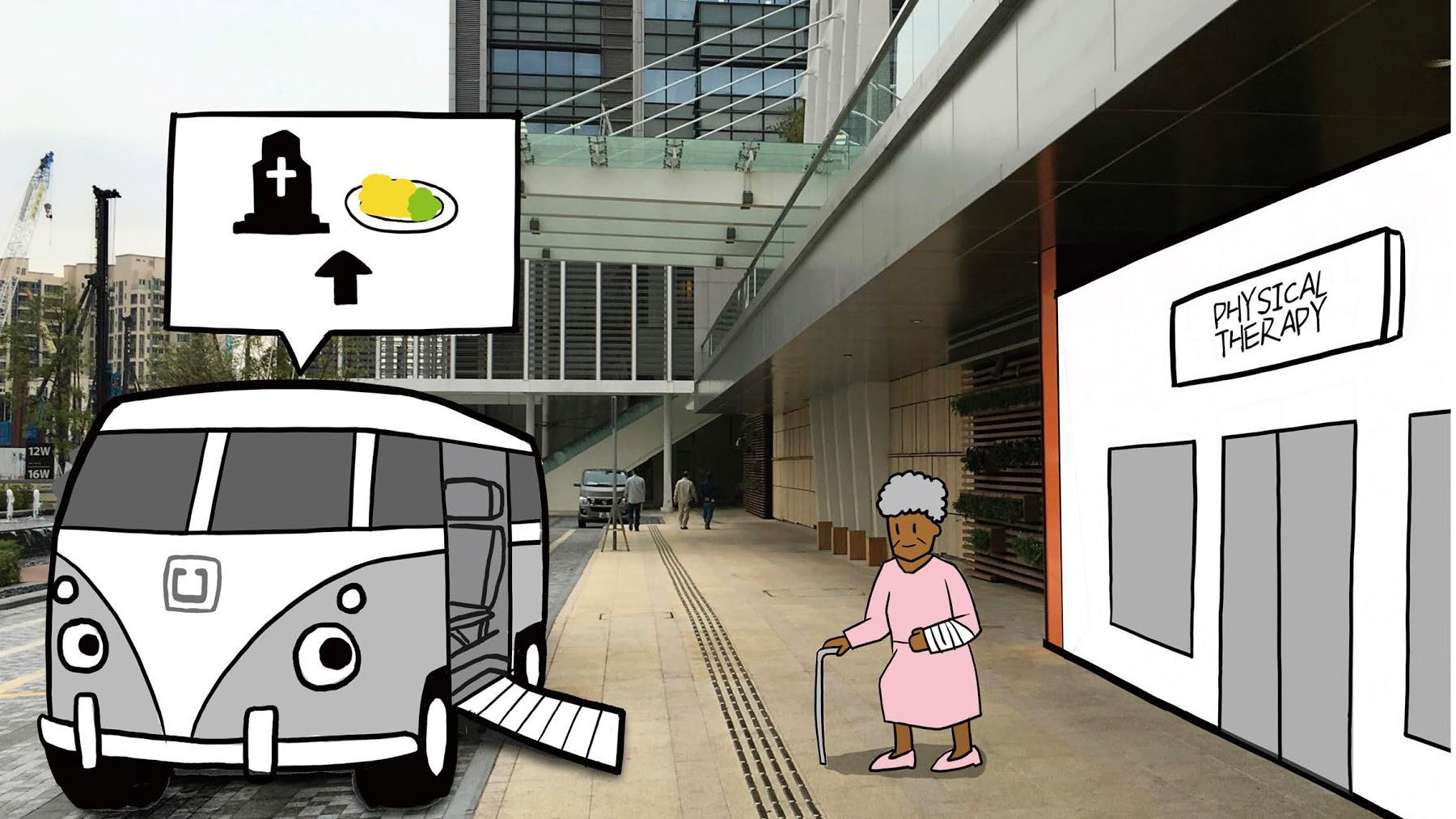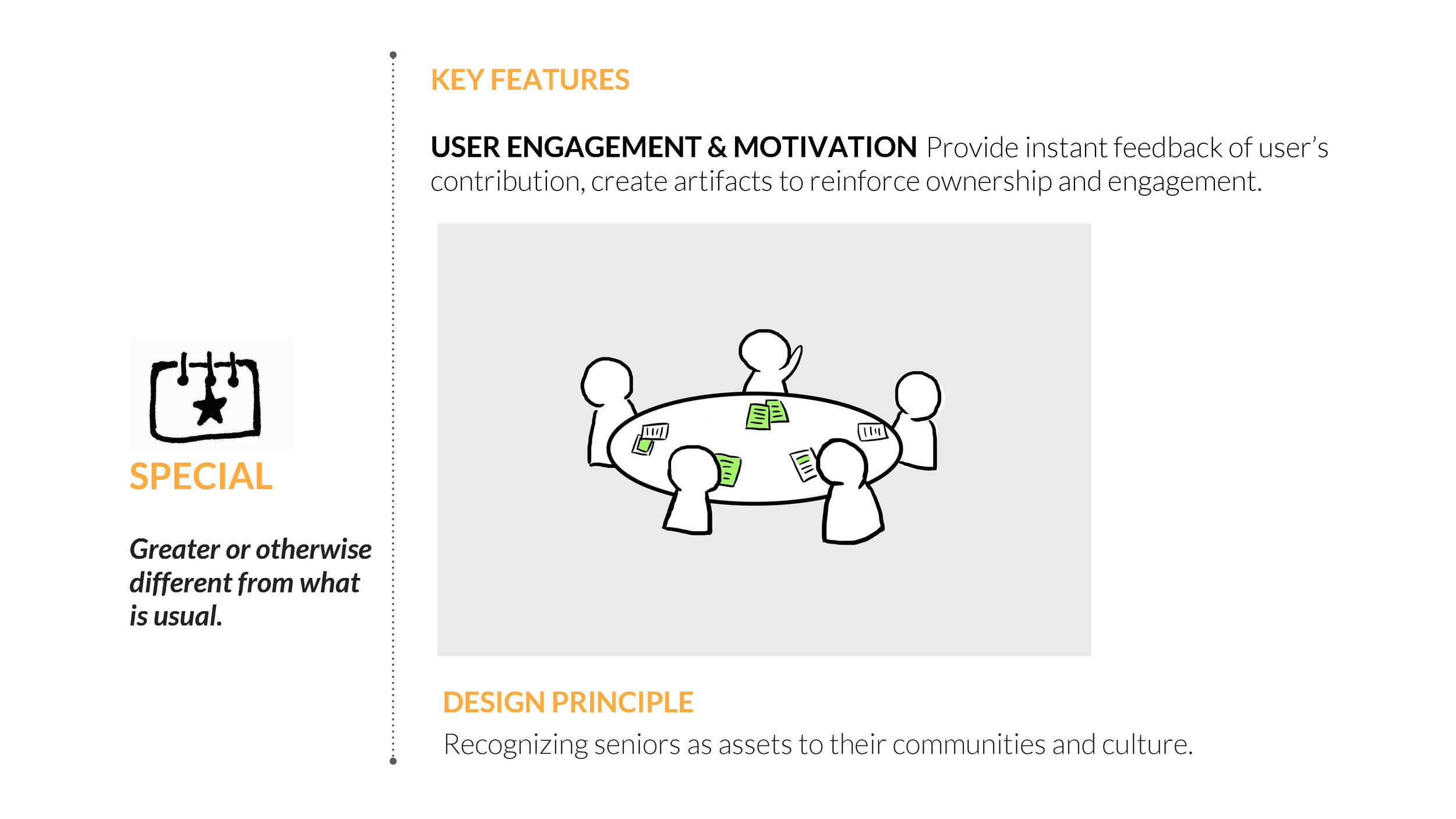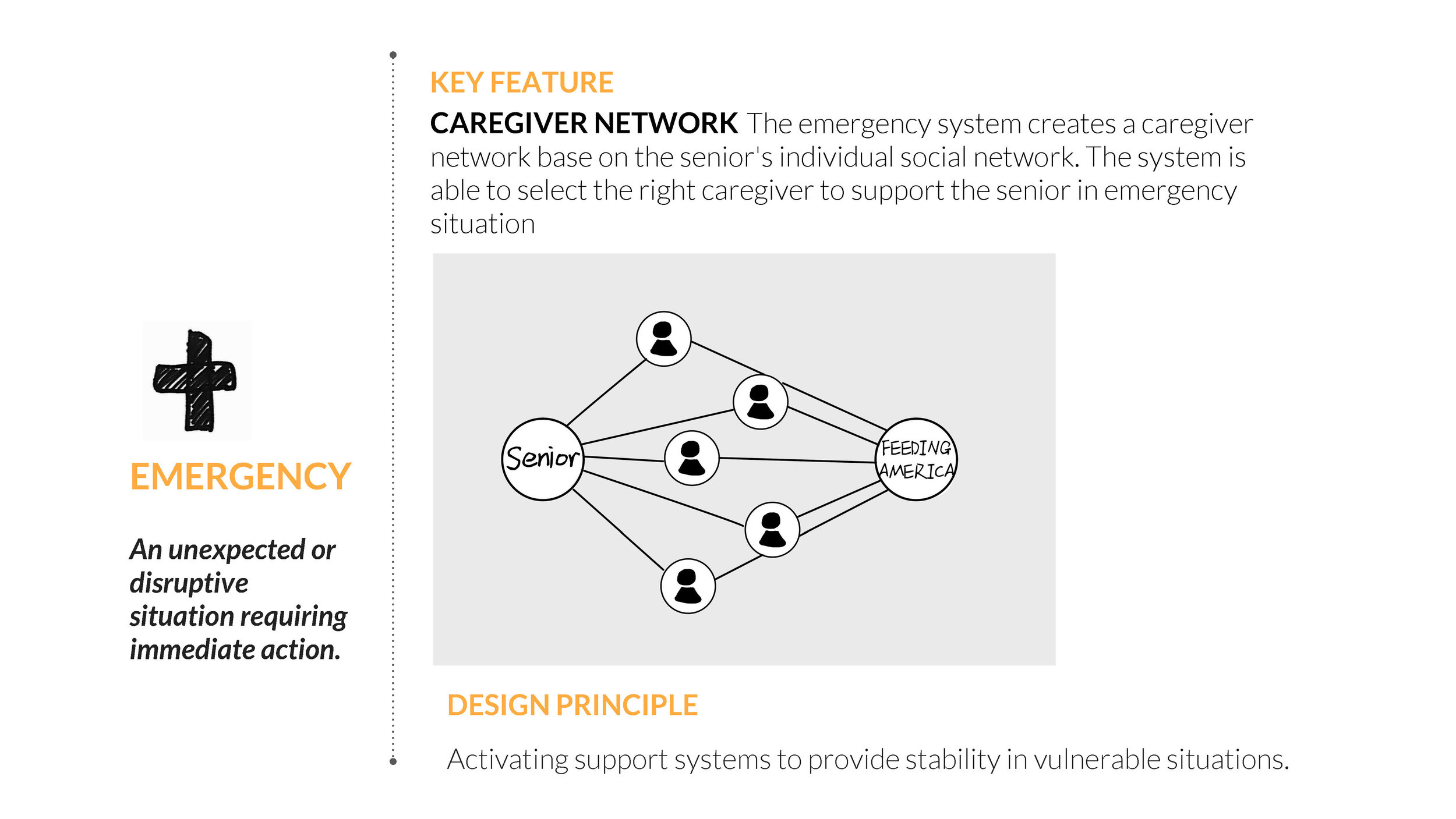Future of food security for seniors
Overview
Food insecurity refers to “the state of being without reliable access to a sufficient quantity of affordable, nutritious food.” It is a different concept as hunger. Hunger is “a physiological state that describes the physical pain and discomfort an individual experiences”, while food insecurity is a holistic overview of the “social, cultural or economic state of the individual”.
How can we relieve food insecurity among senior citizens in 5 to 10 years? Feeding America, a non-profit organization to feed America's hungry through a nationwide network of food banks, works with IIT–Institute of Design to envision the future scenarios that seniors will be able to access nutritious and affordable food.
Outcome
We defined future scenarios that how Feeding America can leverage new technology to relieve food insecurity for seniors, and delivered the strategy and roadmap on how to achieve the vision.
Team: 7 people in the class of sustainable workshop
Client: Feeding America
Duration: 4 months
My Role
Design Research
Crafted research report & user experience map
Planned design analysis workshop
Led concept exploration on direction of technology
Led scenario envision on emergency
Deliverable
Design Research report
Experience map
Multiple workshops
Future scenarios envision brief
Problem Reframing
Food insecurity is a holistic overview of the “social, cultural or economic state of the individual”. The research should not only focus on the relationship between seniors and foods but also seniors' overall living environment. In order to tackle the BIG design challenge of "food insecurity", we define our scope to clear research questions in the very beginning phase.
- Why do seniors experience food insecurity?
- What does it take for seniors to access food and eat meals?
- How do seniors understand their eating options and make decisions?
Design Research
Secondary Research
Through secondary research to explore the potential opportunity area by understanding the context of the problem and existing solution in Feeding America.
Why "food insecurity among seniors" matters
- Big Population: By 2050, the senior population in the US will expand to nearly double, reaching 84 million seniors in America.
- Rapid Growth: Everyday 10,000 individuals are turning 65 years old in the next two decades. The number of food insecure seniors has increased by 130% from 2001 to 2012.
- Diverse Needs: Seniors have diverse needs on foods based on eating habits, financial capability, heath situation, social influences and etc..
Primary Research
We start from interview with stakeholders including food banks staff, food pantry staff, Feeding America employee and etc. to understand their point of view on senior's hunger problem.
Through visit to food banks, food pantries and multiple seniors' activity areas as senior buildings, library, and their home to build an understanding of the logistics of food distribution and gain empathy on seniors' experience on utilizing services to access food.
- 25 Seniors in Senior buildings, Food Programs(Food Pantry, Grocery Market), Public space(Thurgood Marshall Public Library)
- 12 Expert Nutritionists, Food bank expert, Food pantry coordinators, Feeding America employees, Program capacity experts, Fundraising experts, Americorps Vista, Community building organizers, Food service volunteers
- Environment observation 2 food banks
- Volunteer experience Greater Chicago Food Depository, Peace Memorial Manor mobile food truck







Design Analysis
Use Framework to Accelerate Design Analysis
Design is never a linear process. The analysis phase was embedded with research. We made sense of the data collected after each interview or field visit. By applying data into different framework, we gain understanding in different perspective. The framework I used is listed as below:
- Understand System: 10 Types of Innovation, ERAF
- Understand People: Seniors’ tech landscape, 5 Human factors, Offering - Activity - Culture
Externalize the Research Work
In order to engage clients into the design process, we post research images, interview highlight and analysis process on the white board. It allows clients to participate in information sharing, stimulate their curiosity on design methods and send invitation passively for collaborating in design.
Conduct Workshop to Create Principles
Before
It was a time to share our insights from 6 weeks' research to clients, and download expertise knowledge and point of view from stakeholders. How could design team and stakeholders work together to arrive at the next phase: to create the design principle for solution. We're facing challenge as:
- How could we provide an immersive experience to help stakeholders build empathy on seniors?
- How could we engage them to apply design-thinking methods to co-create design principles?
During
We engineered this workshop by thinking through the whole flow, and address every every detail from foods to participants' energy level. The workshop is designed to be three sessions:
Immersive experience to build empathy: The design team built 5 immersive station to cover the challenging scenarios seniors face everyday on foods, routine, cooking ability, meal options, mobility. Each participant was given a persona card, visited the 5 station and built stories for the designated person.
Generate insights: The insights card effectively shared the findings to stakeholders and worked as a stimulus to download participants' tacit knowledge. By clustering insights, team found the pattern, and developed the top insights.
Develop design principles: Top insights inform the design principles. By creating, voting and sharing, team achieved the consensus on design principles that guide the design in later phase.
After
From data from the workshop, we expand our understanding on seniors and Feeding America, and finalized design principles. The two deliverable in this phase are persona, user experience map & research report.
Persona
After interviewing with 25 seniors and many observation in their community location, we map each interviewee's by different variable as basic situation, foods choice, health condition, financial condition, eating habits, and find patterns to generate the following three personas to build empathy and identify who we should design for.
User Experience Mapping
User experience map, as a important deliverable in design phase, is used to capture the research findings that responds to the initial three research questions: Why do seniors experience food insecurity, What does it take for seniors to access food and eat meals and How do seniors understand their eating options and make decisions. We select the most important dimension: Thinking, Doing, Touchpoint, Barrier to narrate the journey that seniors get foods and eat meal.
Insights & Design Principles
Design Synthesis
Opportunity Areas Overview
We defined 4 opportunity areas that corresponds to the design principles we created:
- Opportunity 1 - Build community with supporting services
- Opportunity 2 - Explore the application of new technology
- Opportunity 3 - Improve existing program(food box, food stamp and etc.. )
- Opportunity 4 - Create effective communication/feedback loop
Prototype and Concept Validation(Tech)
I teamed up with another design researcher to explore possible application of the cutting-edge technology as AI Conversational agent, Wearables and etc. We run field test with seniors by sketchy prototype as kiosk in grocery store to reach new audience, wearables to send feedback anytime, voice assistant for inquiry and proactive advise.
What we learned:
1. Seniors is not afraid of technology, they are afraid of unfamilar tech terms, unfriendly interaction, and uncertain result.
2. Seniors are willing to try if assistance is provided by peers or people they trust.
Solution
How Feeding America works now?
Currently Feeding America works as an umbrella network. It collects foods and funds donation from organization or individuals. If we are considering food insecurity being more than food, Feeding America we need to reconsider the existing model of FA .
Strategic Vision for Future of Feeding America
Feeding America will work as a broker with multi system integration catering to senior needs.
Transforming Feeding America from just being a centralized logistical food delivery system to…..
To a decentralized distributed channel network with multisystem integration catering to senior needs.
User Scenarios in future
Under each opportunity areas, we came up with different features and tested them with the audience. Finally we integrated them into the systematic solution that address senior's experience in the four following scenarios:
- Routine: A sequence of action regularly followed.
- Special: Different from what is usual.
- Emergency: An unexpected situation requiring immediate action.
- Temporary: Transitory situation.









Deliverables Download
If you're interested in knowing more details about the finding of the research & design brief on the solution, contact me for the full version.
Research Report

































